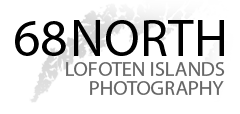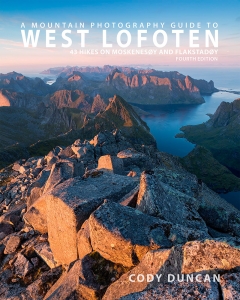
Photo: Evening sun over Slettind mountain peak, Flakstadøy, Lofoten Islands, Norway. July 16, 2024. 23:39
Yesterday was a bright and sunny day with the midnight sun shining over the sea. I had been hoping to go hiking in my local mountains, but a couple unscheduled meetings left me sitting at my computer until it was too late to head out. This left me a bit stuck today, as I was hoping to have shot something for today’s post.
Trying to figure out something else to post, I realised that I’ve never really posted the main viewpoint from the location I was planning to visit. I’m not quite sure why, as I’m in the area a couple times per year, but I always seem to post a different view than the main one. Friday Photo #447 is of the misty valley below, but not the mountain. Friday Photo #509 is an early autumn view of the mountain, so I guess that counts. Friday Photo #584 is the mountain with northern lights. And Friday Photo #602 is of the foggy landscape on return from the hike – taken on the same evening as today’s photo.
As summer in west Lofoten now often consists of crowded trails and expensive parking, I’m lucky to have a couple nice scenic views and mountains quite close to home. And as this view is actually quite close to a more popular mountain peak (though still relatively quiet), I’ve rarely seen anyone else in the area as its not really an obvious place to go, as there are just faint wanderings of sheep trails to follow once the route separate.
There is also nice, and perhaps even better, viewpoint off to the right and up onto the ridge from where this image is taken. Though the angle from that location means the sun will disappear behind the mountain around 23:30 or so. So it’s actually better to wait a little later into July with the sun getting lower on the horizon. Last night it would have just been a clear blue sky over the image and perhaps a bit boring.
One of the wonderful things about the sun north of the arctic circle: It sets or rises in all 360˚ of the compass. So with planning, you are able to position the sun to almost any location you want it across many locations and particularly coastal area with an unobstructed view of the horizon.
Camera Info:
Nikon Z8
Nikon 14-30mm f/4
18mm
ISO 100
f13
1/30 Second
WB Daylight













